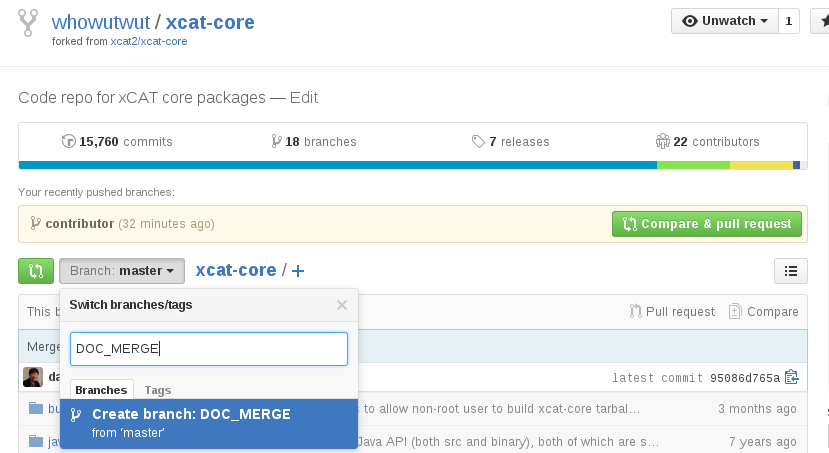


Tracking branches with “fetch” and then “merge”. You will have to add -track to your branch command or manually merge remote Will appropriately merge from that remote branch. Tells git-branch and git-checkout to setup new branches so that git-pull(1) You can tweak how this works through your ~/.gitconfig file. This was done to ensure that the branches did not derive from a remote tracking branch.
Now, in these examples the -no-track option was specified. When a local branch is started off a remote-tracking branch, Git sets up the branch (specifically the branch.$ git branch -no-track feature2 origin/master Local branches can also be created from any start point, be it a remote tracking branch or any treeish passed in. It adds 2 steps to the process of creating and tracking a new branch: pushing a ref head and then fetching the branch youre branching off of.

$ git branch -track feature1 origin/masterīranch feature1 set up to track remote branch refs/remotes/origin/master.įrom here you can git checkout the branch and work with it, and since it’s tracking the remote branch, it will know where to bring in changes from when you fetch or pull. For example, if you wanted to create a new branch from the master branch from the origin remote, using this would set it up so it would pull from the remote and branch automatically: When branches are created using the -track option, they will be set up to linked to the remote branch. If you wanted to see remote branches:Īnd finally, if you wanted to see them all: This just shows the default local branch, the master branch. For most normal, freshly cloned repositories, you’ll see this output: Luckily, the git branch command gives us some insight to what branch is what.
Basically, there’s two types of branches: local, and remote-tracking. An easy way to do that is: git checkout -b snowden -track origin/snowden. Confused about what exactly a remote tracking branch is? Don’t worry, it’s not just you. Create a branch in your local repo by running the git checkout -b new-branch-name command, where new-branch-name is the name of the new branch. I need to setup a local branch to track the latest on a remote branch on github.


 0 kommentar(er)
0 kommentar(er)
